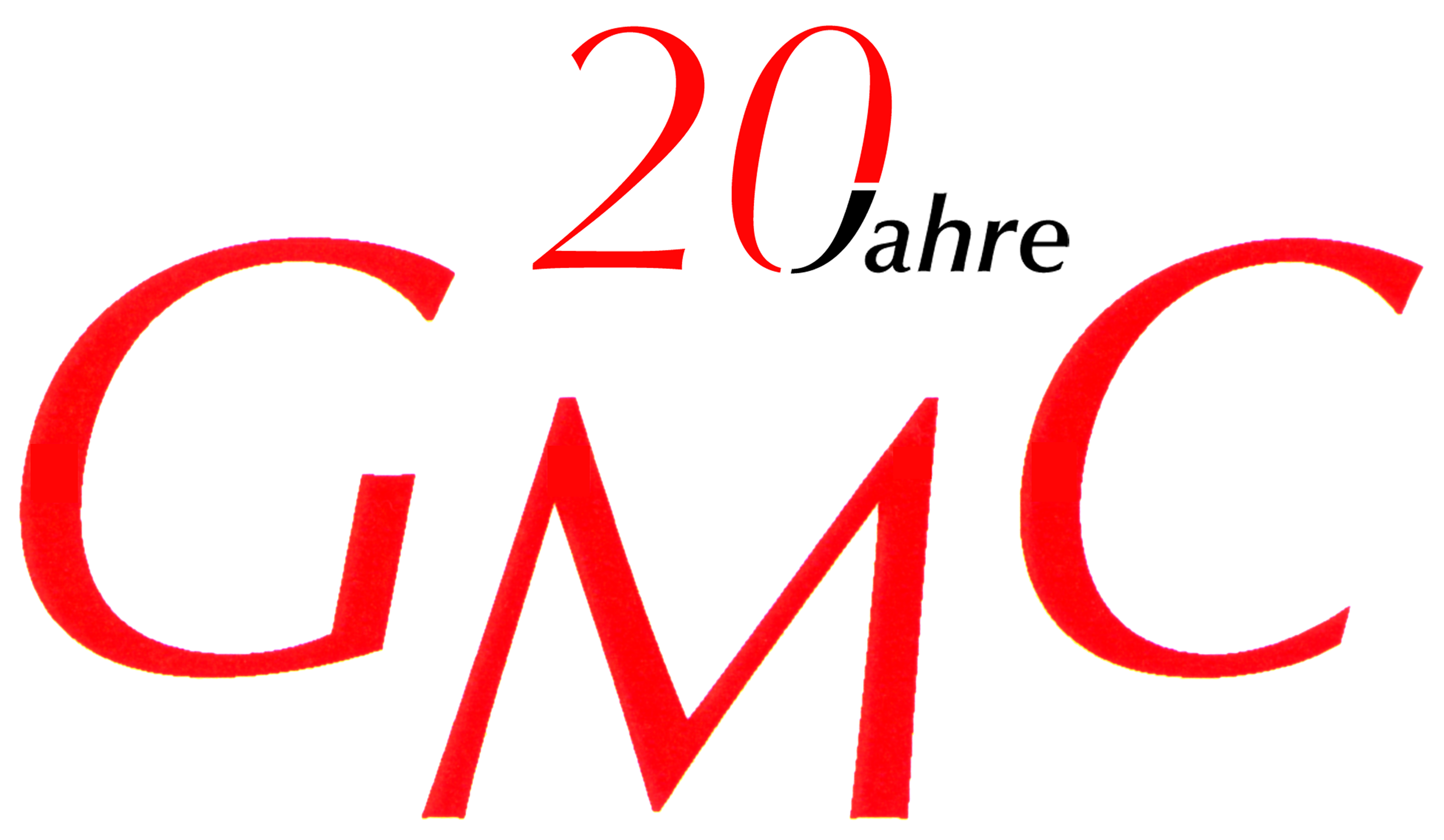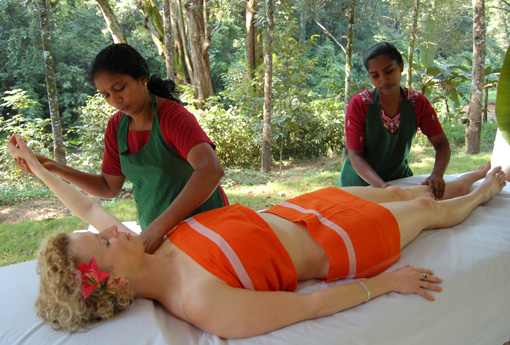
FOREWORD
The author, Gerd Michael Müller, born in Zürich in 1962, traveled as a photo-journalist to more than 50 nations and lived in seven countries, including in the underground in South Africa during apartheid. In the 80 years he was a political activist at the youth riots in Zürich. Then he was involved in pioneering Wildlife & eco projects in Southern Africa and humanitarian projects elsewhere in the world. As early as 1993, Müller reported on the global climate change and in 1999 he founded the «Tourism & Environment Forum Switzerland». Through his humanitarian missions he got to know Nelson Mandela, the Dalai Lama and other figures of light. His book is an exciting mixture of political thriller, crazy social stories and travel reports – the highlights of his adventurous, wild nomadic life for reportage photography .
In 1996 I flew to India for the first time, to the southern tip of Kerala, the land of the up-and-coming Ayurveda resorts and clinics. I had already been in close contact with Ayurvedic medicine in Sri Lanka and had done a Pancha Karma cleansing cure. On the tropical island I visited seven of the best Ayurvedic resorts at that time and compared them with each other. These were the „Aida“ in Bentota, the „Lanka Princess“ in Beruwela, „Lawrence Hill“ in Hikkaduwa, the „Paragon“ in Unavatuna, the „Surya Lanka“ in Matara and the „Vattersgarden“ in Kottegoda. The report about it found tearing paragraph in various Wellness magazines. I was so fascinated by the Ayurvedic medicine that I learned about here that I decided to travel to Kerala and there I met the South Indian Ayurvedic pioneers the cgh earth group, which has already made a name for itself with very exclusive resorts.
Ayurvedic medicine was discovered over 5,000 years ago by highly gifted Indians in the depths of their meditation and spirituality, but as a result of colonization and professional bans by the British colonial government, it was suppressed for over 50 years before experiencing a revival in the 1990s. „A lot of knowledge was lost as a result,“ says Dr. Jayawardhana of the University of Colombo. What was developed thousands of years ago in northern India is a holistic system of nature that considers body, mind and spirit a unity, because nthe Ayurvedic philosophy assumes that all matter, including humans, can be traced back to the five elements of earth, water, air, fire and space.
Three basic constitutions, the so-called doshas, are formed from the combination of the five elements. The elements air and space form the Vata-Dosha and stand for the life principle movement. It therefore controls the movement processes in the body, breathing and the nervous system. The Pitta energy is responsible for all reactions that generate heat, i.e. the digestive tract and metabolic processes. The elements earth and water influence the third dosha, kapha. Their energy is structuring, shaping and responsible for cell and skeletal structure, at the same time regulating fluid balance. And then there are the three pillars of health: these are „Ahar“ (Nutrition), “ Nidra“ (Sleep) and “ Bramacarya“ (Mental Ethics).
Now, every human being has his individual combination of doshas from birth and this unique combination influences his health and physique as well as his character traits. Only when the Doshas are in balance, body and soul are healthy. This is the goal of Ayurvedic treatment, especially in the area of chronic diseases. Like migraine or neurodermatitis, Ayurveda can show considerable success. The Ayurveda cure usually begins with a pulse diagnosis, where the Ayurvedic doctor gently presses three fingers above the base of the thumb on the forearm and measures the pulse beat. She determines whether it „throbs strongly, glides through the body like waves, hops like a frog or trots along like an elephant.“ This is how the harmony of the three doshas is determined.
Ayurveda assumes that everything grows in nature that is needed to make and keep a person healthy. Thus, plants, minerals, ashes, salts, barks, woods, roots and animal products are cooked and powdered and then made into pills, ointments and oils. The delicate yellow sesame oil is the base of all massage oils. It is rich in unsaturated fatty acids and makes brittle skin soft and smooth. To the sesame oil the doctor mixes other natural ingredients that are specifically adapted to the particular dosha type. The oil can thus have an optimal effect on the individual constitution of the person. No other medicine in the world has such a universal, profound and holistic cleansing system as Ayurvedic medicine and the Pancha Karma cure in particular. It is the mother of all cures! During 21 days first all toxins are eliminated from the body and the tissues down to the bones are rubbed with the healing oils. The appropriate diet and the beneficial treatments lead to the fact that after the Pancha Karma cure one is bursting with vitality and feels like a new person.
As the wellness and wellbeing tourism industry began to establish itself at the end of the 90s, I focused very strongly on this branch of tourism for a few years and visited the best spa resorts around the world, as I had now secured many more noble glossy magazines for publications in addition to cooperating with the daily newspapers and eventually not only delivered reports for publications such as the „Relax and Style“, „World of Wellness“ and „Wellness live“, but also generated advertisements and thus also profited from the publishing business. From then on, Ayurvedic medicine developed at a rapid pace in Europe as well. Ayurvedic centers shot up like mushrooms, because Far Eastern medicine quickly wanted to establish itself in the medical sector as well as in the wellness sector, and nutritional counseling in particular would be in demand, experts agreed at the time. „You are what you eat,“ Hypocrates had once said and was, so to speak, the first Western Ayurveda ambassador. More and more people are turning back the clock and letting themselves be convinced by ancient healing methods, or at least trying them out. The fact that yoga and meditation do not fail to have an effect on a healthy life has also become increasingly accepted in the western world. At least yoga has become an unmistakable trend.
Arriving in Kerala, I was allowed to visit the crown jewel of the „cgh earth group“, the old Maharajah’s palace „Kalari Kovilakom“ and experienced a truly royal reception and got one of the twelve palace rooms. The authenticity of the ancient culture and the sanctity of an ashram gave this Ayurvedic temple a unique ambience. Whoever enters here leaves the old world behind and lives a completely different primal experience cut off from the outside world and a highly qualitative treatment. Especially in Germany, the „Somatheeram“ and „Malatheeram“ in Chowara near Trivandrum became famous. The two resorts were regularly awarded as „best Ayurveda resorts“ by the Department for Tourism and received the „Greenleaf Award“.
Another highlight was the „Duke’s Forest Lodge“ in the middle of a rubber plantation in Anapara. The bijoux, which consists of five spacious pavilions is embedded in the magnificent tropical fauna in the middle of the forest. Another highlight was the „Coconut Lagoon“ in Kumarakom, which is located on an enchanting lake in a magnificent garden setting and captivates with its traditional Kerala houses. Both the food and the therapists were top notch. Also a very exciting place is the „Spice Village“ in Periyar, which is located in the middle of a tea plantation at an altitude of about 1000 meters and is therefore very pleasant from the climate.
If you are looking for an international luxury hotel with a very good Ayurveda department and many spa treatments, you will find it in „The Leela Meridien“ at Koralam Beach. Enough of the good well-being in India, now we briefly take a look at the second trip to India when Narenda Moodi was in campaign mode and had orchestrated one of the most professional international election campaigns (that I have ever seen/witnessed) and at the same time propagated a tourism promotion program for the state of Gujarat, from which both Moodi and Ghandi originated.
Ayurveda: The three Dosha types and their characteristics
The doshas shape the characteristics and functions of a person’s physical and mental abilities. Here, in a simplified way, are the three most important types out of a total of ten differentiations.
Vata type: strong-willed, responsible, enterprising, courageous, emotional, motivated, creative, flexible, spontaneous, freshness, joy, happiness. Negative: anxiety, fear, nervousness and jumpy.
Vata – kinetic principle – breathing, & movement (joints and muscles) responsible for stimulating Agni (digestive fire), for elimination, sensory perception and speech.
Organs: Large intestine, lumbar and sacral regions, thighs, bones and sensory organs.
Qualíty: Provides cellular fluid, shapes physique/structure, makes joints supple, moisturizes skin, strengthens immune defenses and is responsible for internal development.
Y/T time: life phase from 46 – 80 years, months: November to February, times of day: 2 to 6 o’clock and from 2 to 6 o’clock.
Tip: ensure a lot of inner and outer peace, avoid cold and prefer warm food.
Pitta type: fiery, courageous, truth-loving, promoting understanding, dialogue and intelligence. Negative: anger, hatred, criticism, jealousy,
Pitta – thermal principle – (body temperature) it regulates metabolism, digestion, energy, heat and skin coloration. Responsible for hunger, thirst intelligence and bravery,
organs: navel, stomach, large and small intestine, sweat, blood, vision and external activity.
Qualítät: regulates the body nature, enzymes, amino acids and controls biochemical processes.
Y/T period: phase of life 17- 45 years. MOante: July to October. Daytime hours: 10 am to 1 pm and 10 pm to 2 am.
Problems: Fever, inflammation, eye irritation, bleeding gums, moles, freckles, tendency to sweat, acidity of the stomach, skin problems, ulcers, sensitive teeth, premature graying, Pitta types are often workaholics.
Tip: Eat something immediately when hungry
Kapha type: slow comprehension, good long-term memory, makes decisions thoughtfully, hard to get upset, comfortable, content person, has stamina, Negative: greed, envy, cling to material things and immovable states.
Kapha – hydro principle (synthesis and union) responsible for lubricating the joints and for oiling and greasing the tissues and skin (metabolism), potency and stability
Organs: chest, throat, head, joints, stomach, tongue,
Qualíty: regulates breathing, heartbeat, nervous system, blinking of the eyes and the movement of the olasma
Y/T period: life phase o to 16 years. Months: March to June. Daytime hours: 6 to 10 a.m. and 6 to 10 p.m.
Problems: Coughs, colds, benbulism, phlegm, depression, desire to eat, weight gain, lethargy, high blood pressure, heart attack, diabetes, water in the tissues.
What is good for the three Dosha types?
Vata type: Warm, heavy and oily foods that taste sweet, sour and salty are good. So cucumbers, carrots, sweet potatoes, cabbage, squash, radishes, asparagus, apricots, avocados, bananas, berries, honeydew melons, churches, oats, wheat, rice, nuts, poultry, meat, fish and boiled eggs. Cold, dry and light foods and cold drinks are to be avoided.
Pitta -type: Good are cold foods, foods and drinks that taste sweet or bitter, such as cauliflower, brocolli, peas, green beans, cucumbers, potatoes, squash, Brussels sprouts, mushrooms, apples, avocado, dried fruits, figs, cherries, mangoes, oranges, plums, legumes, dill, fennel, cardamom, corriander, mint, cinnamon. Hot, spicy, salty or acidic foods should be avoided.
Kapha type: light, dry and warm foods that are spicy or bitter tasting are good. Eggplant, cauliflower, brocolli, carrots, cabbage, asparagus, peppers, mushrooms, salads, apple, apricots, berries, cherries, raisins, dried fruits, all grains except oats, all legumes except white beans, garlic, honey, buttermilk, cottage cheese, madel, fish, game, shellfish, eggs, sunflower oil. Avoid heavy, oily, and clammy foods, as well as everything that is sweet, sour, and salty.
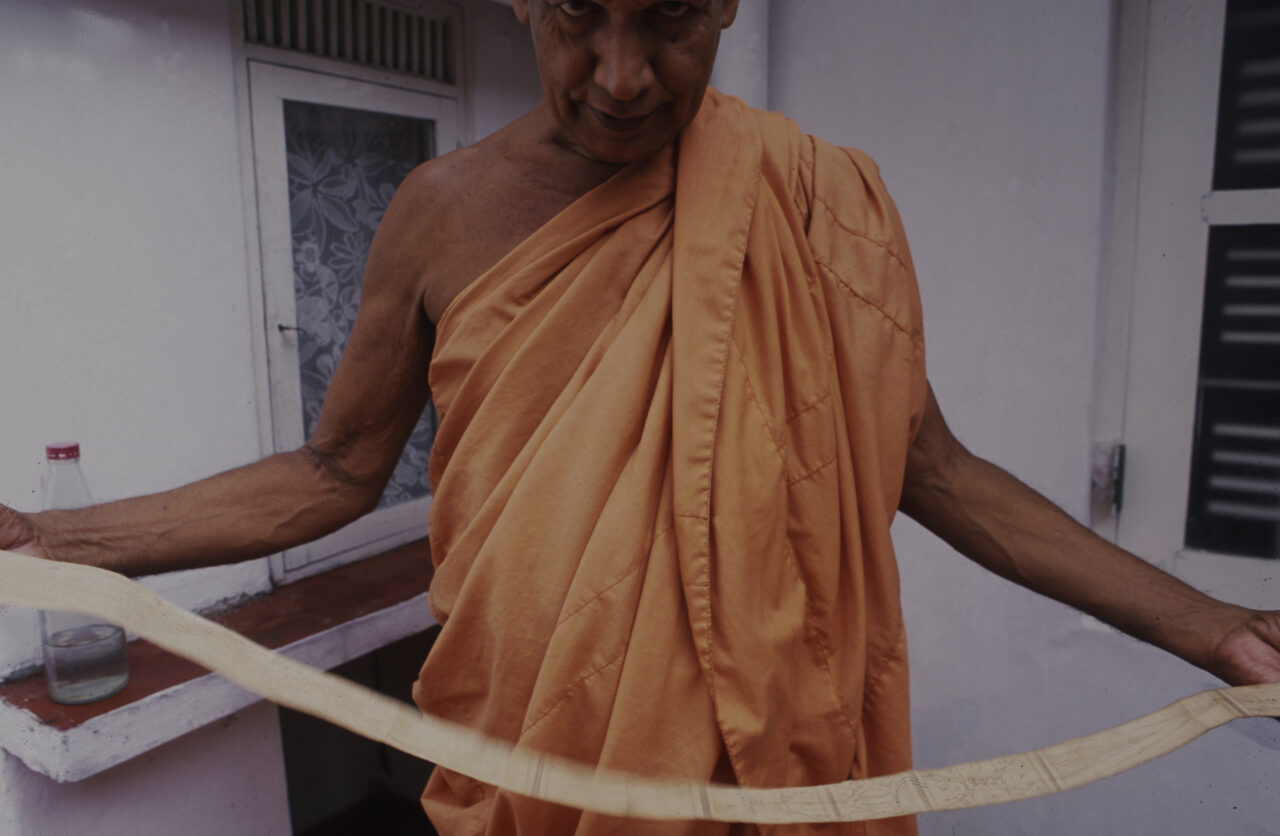
EinBuddhist monk and ayurvedic doctor showing old sanskrit letters in Galle-City, Sri Lanka 

Kalari Fighters at the Kalari Kovilakom Ayurveda Healing Palace 
Tai-Chi in the beautifull flowert garden of the Somaatheram ayurvedic healing resort. 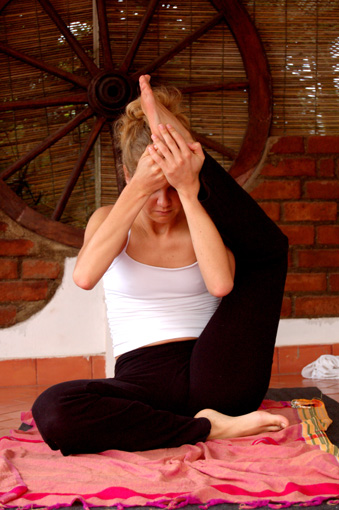
Yoga training at the ayurvedic health resort Somaatheram in Kerala 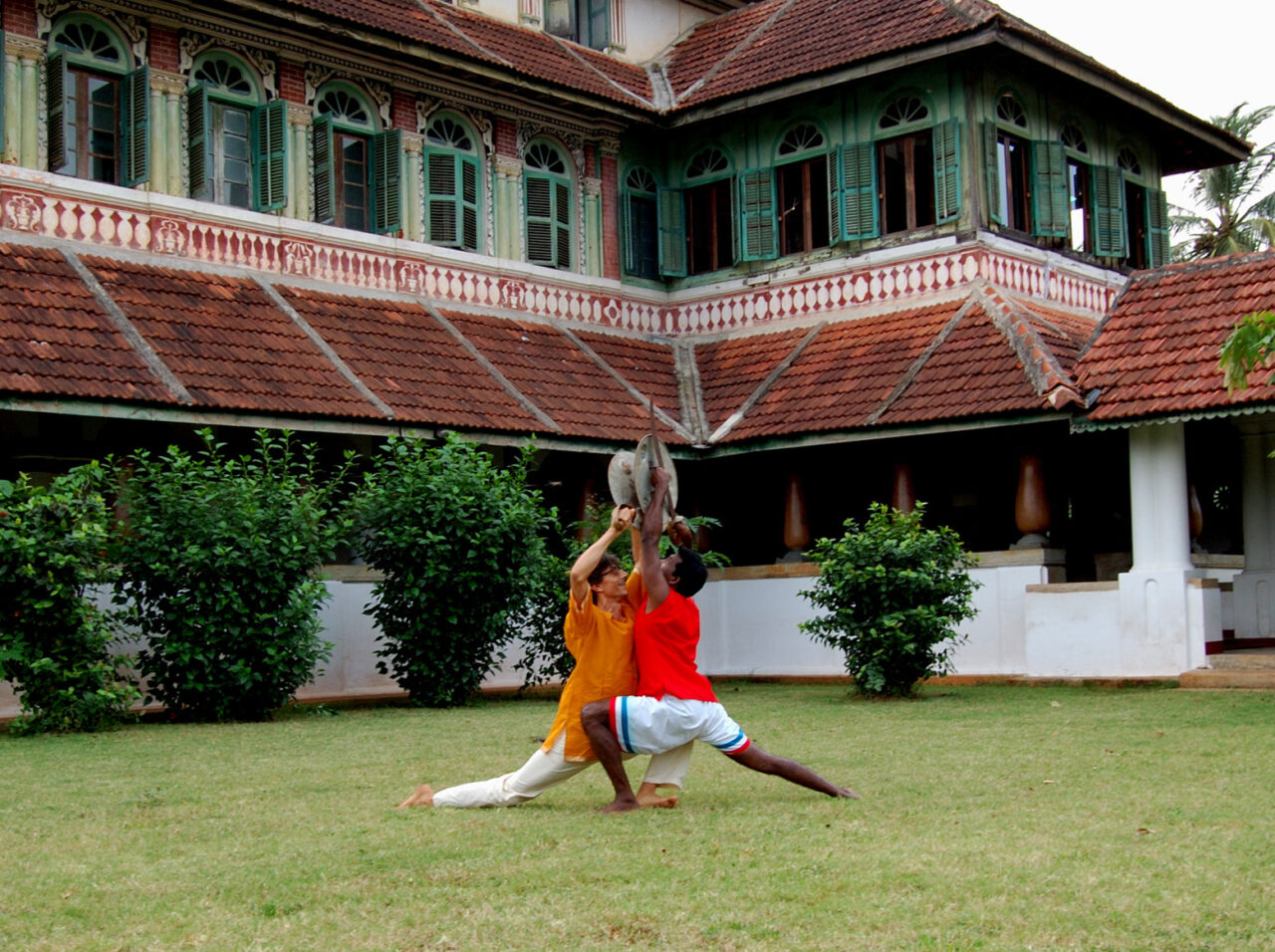
Kalari Fight at thei Kalari Kovilakom Ayurveda Healing Palast in Kerala 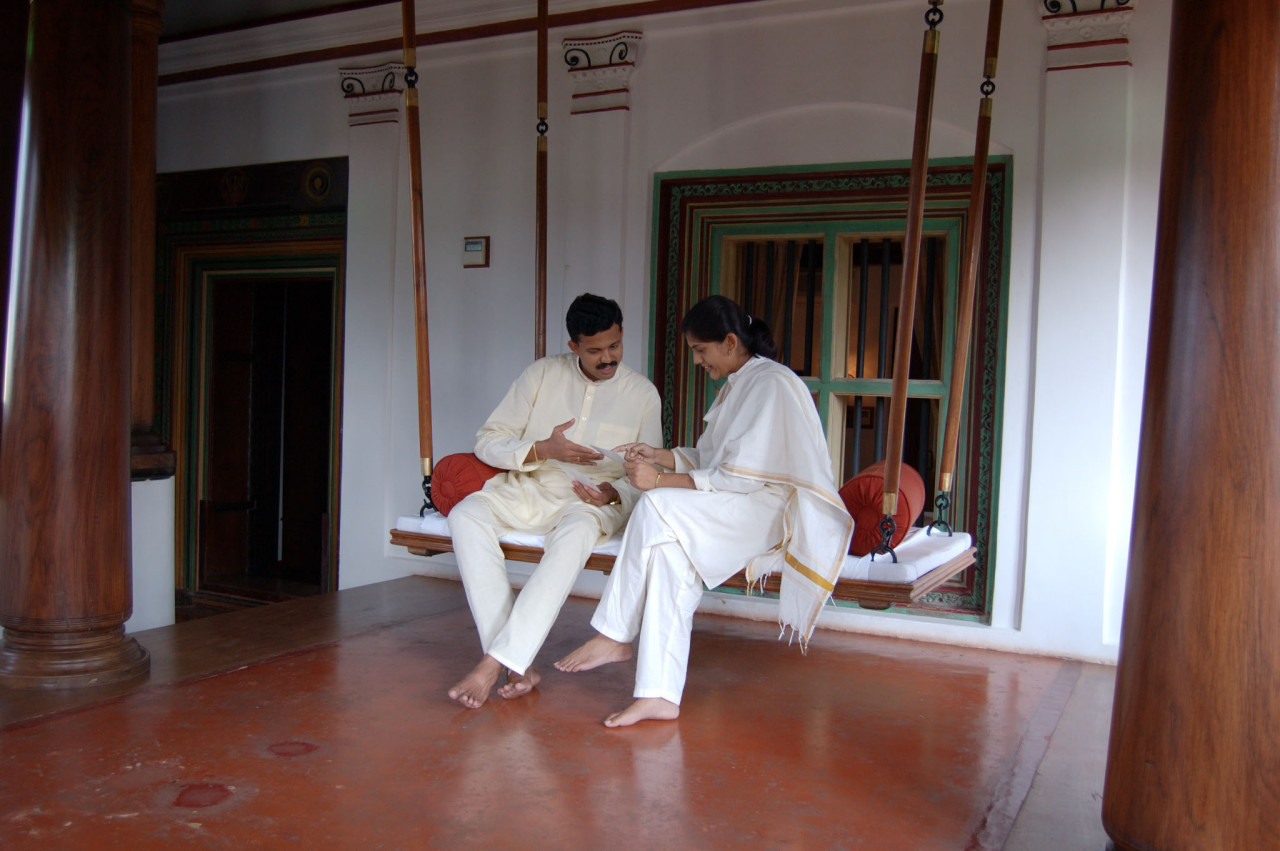
Kalari Kovilakom Theraphists 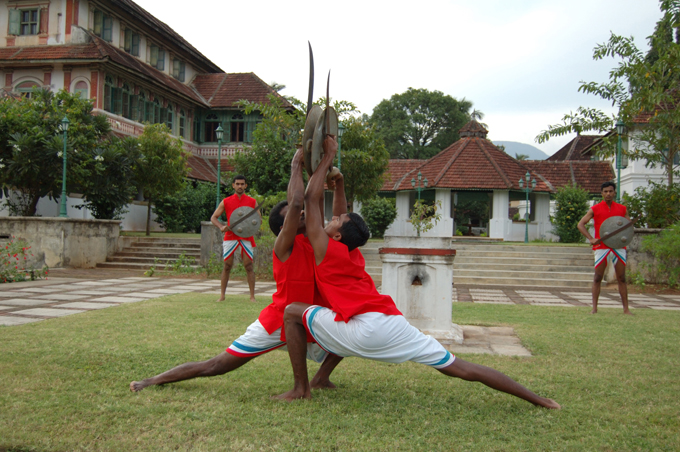
Kalari Fighters at the Kalari Kovilakom Ayurveda Healing Palace. 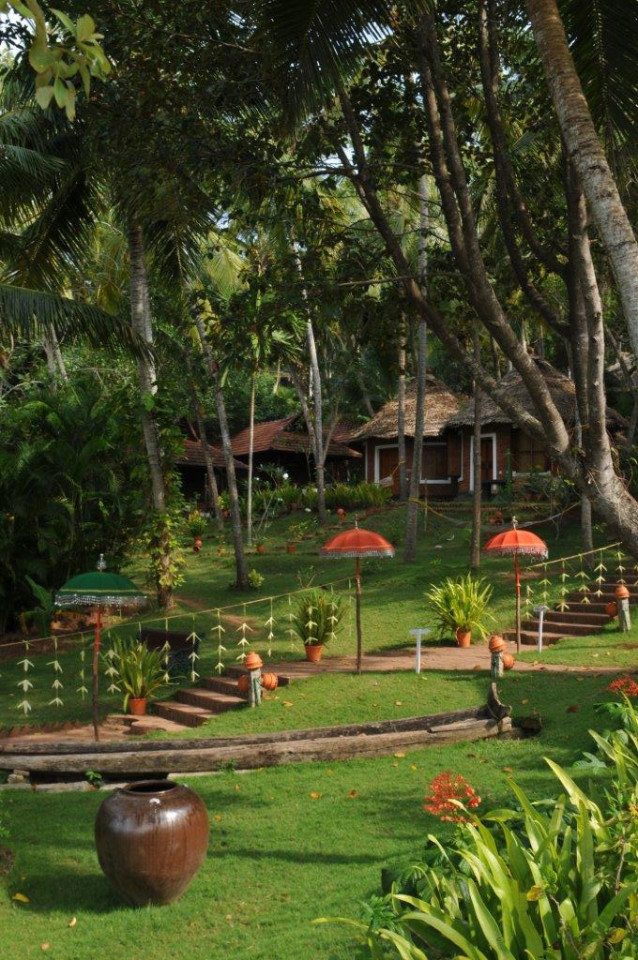
Ayurveda resort Somatheeram, South of Kovalam, Kerala 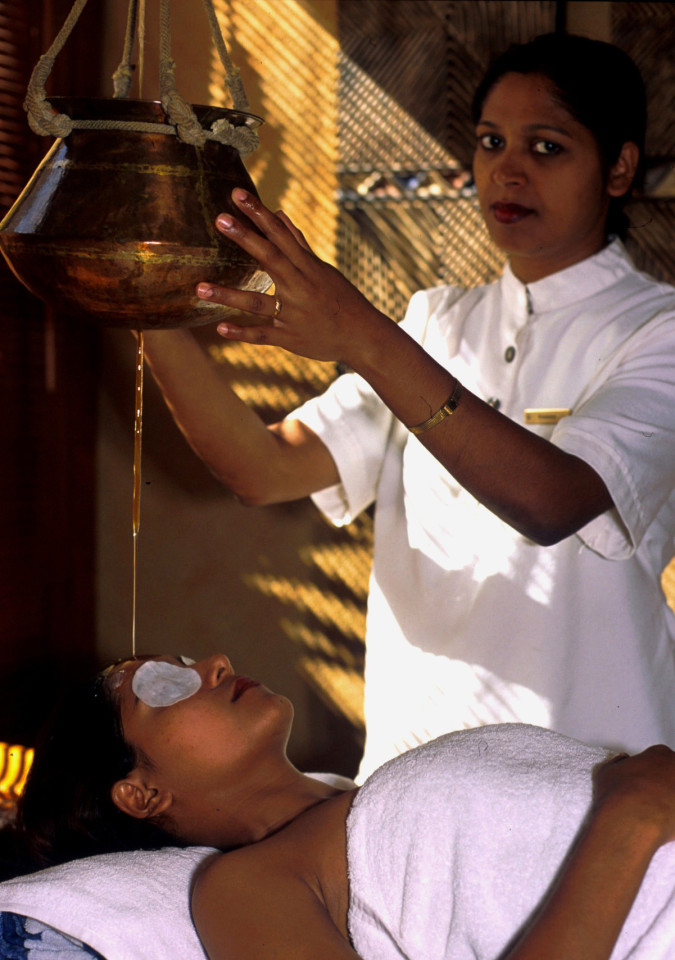
Shirodhara at Oberoi Hotel Mauritius. 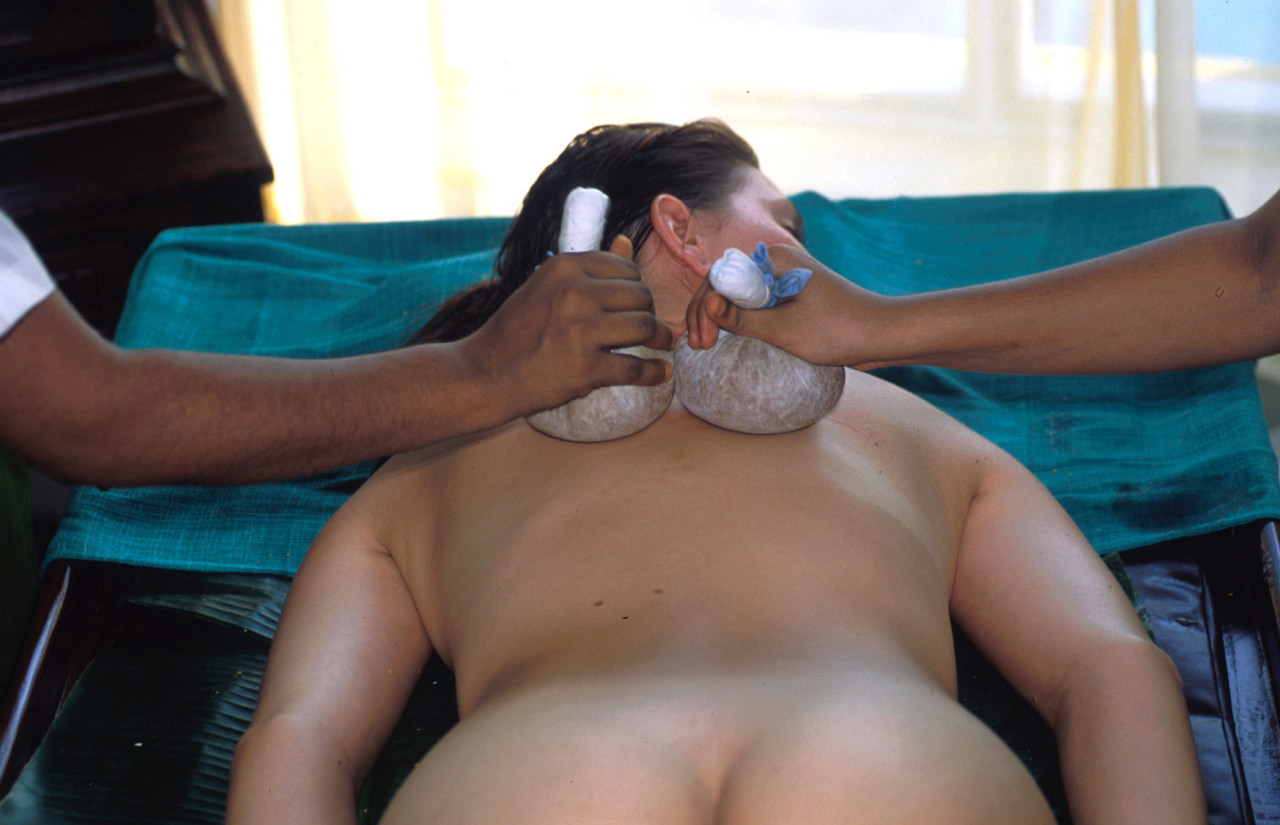
Ayurvedic massage with rice-balls stamped 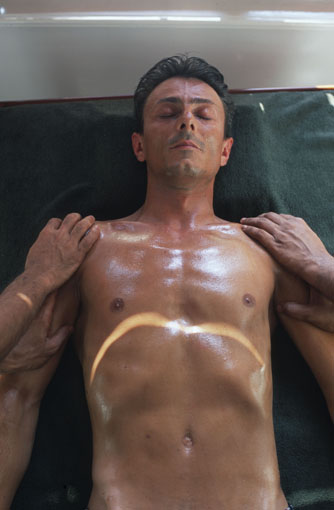
„Abhayanga“ at AIDA Hotel, Sri Lanka 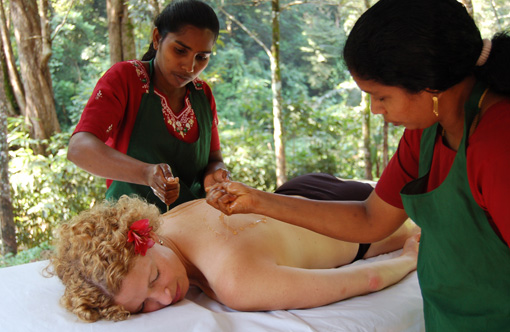
Abhayanga at Dukes Forest Lodge 
Abhayanga at Dukes Forest Lodge 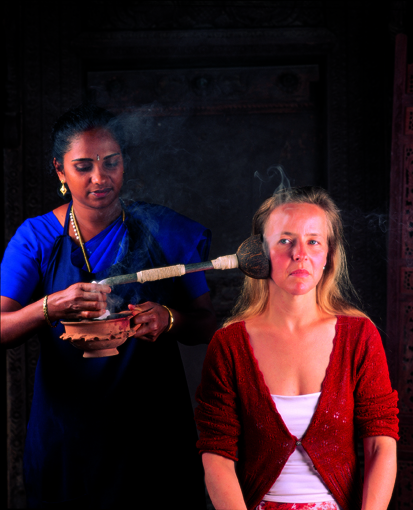
Dhoopanam im Somatheeram 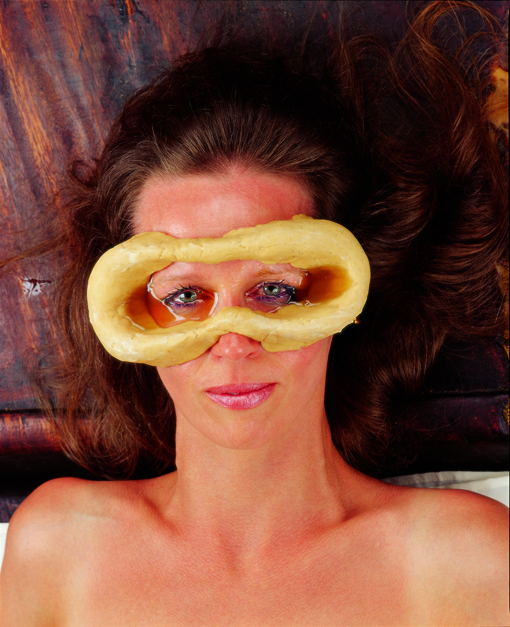
Tharpanam Treatment 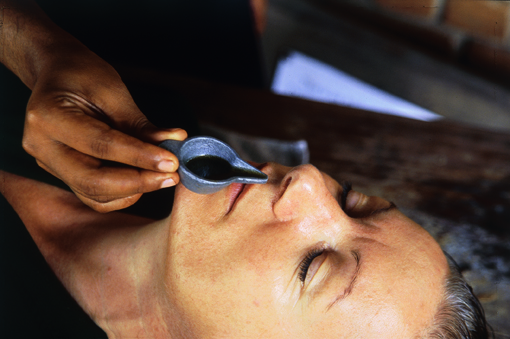
Ayurveda Nasayam 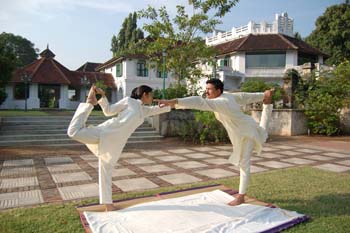
Yoga teachers at the Kalari Kovilakom Ayurvedic Healing Palace in Kerala 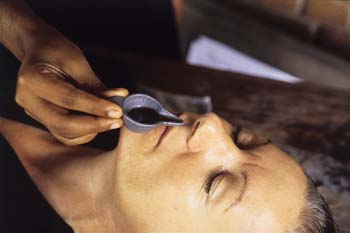
Ayurvedic eye treatment in Kerala, India. 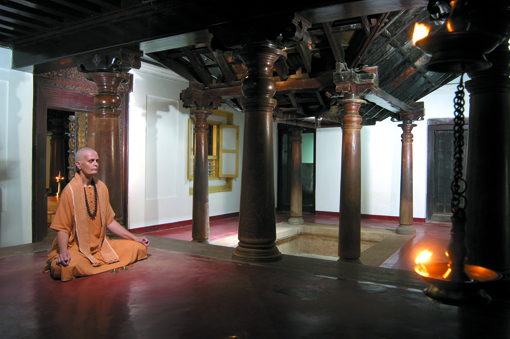
Yoga and ayurvedic health treatments at the ancient Maharadja palace Kalari Kovilakom in Kerala. 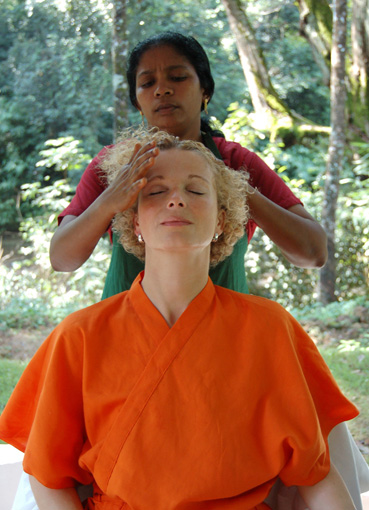
A western patient receives a ayurvedic treatment in Dukes Forest Lodge in Kerala. © GMC Photopress, Gerd Müller, gmc1@gmx.ch 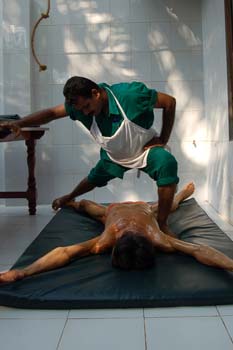
Full body fitness for the therapist as well doing this special ayurvedic footmassage in Kerala.
